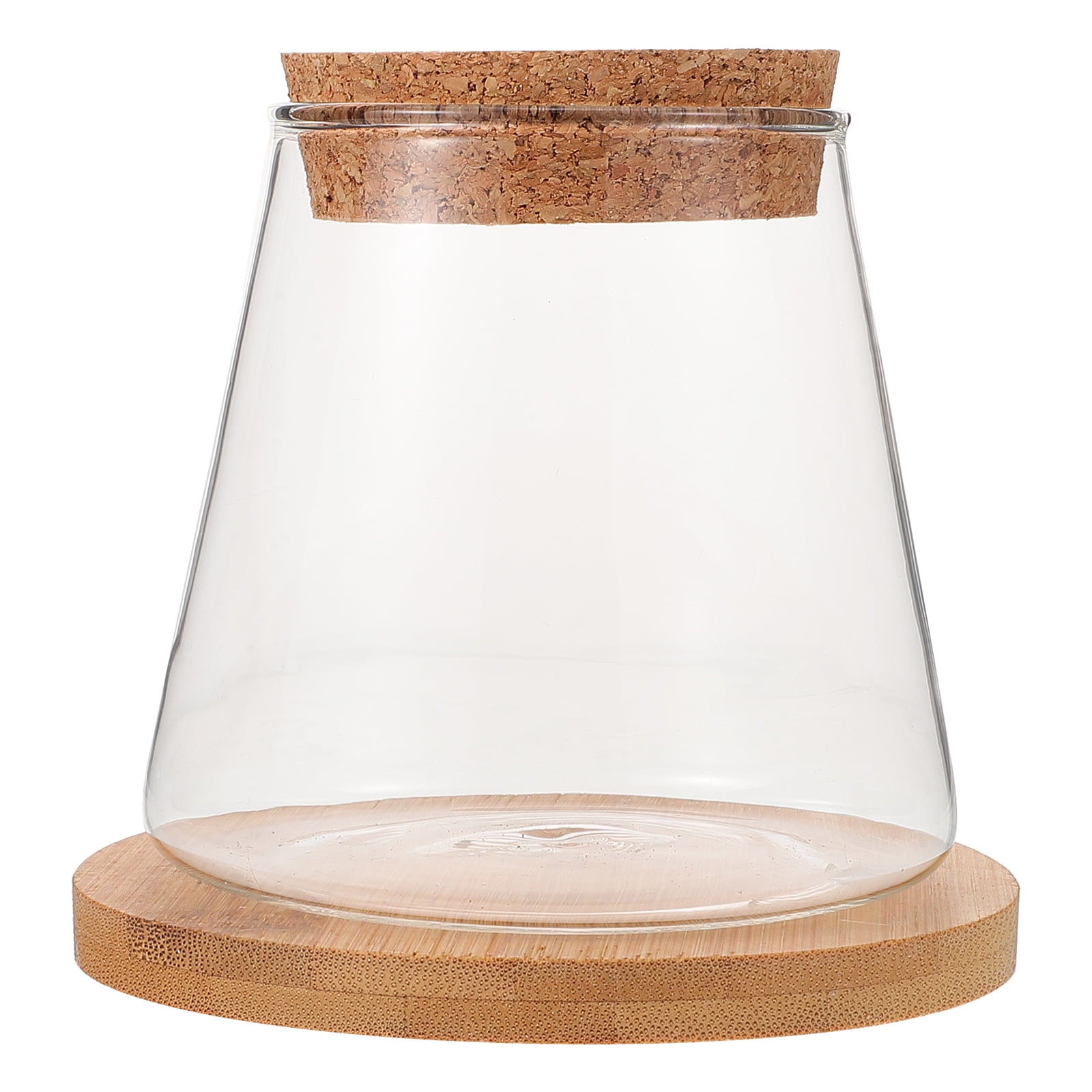Small Flatbed Trucks For Sale: Your Comprehensive Guide to Versatility and Value pickup.truckstrend.com
In the dynamic world of commercial and personal transportation, few vehicles offer the blend of versatility, practicality, and maneuverability quite like the small flatbed truck. More than just a workhorse, these agile machines are becoming increasingly popular for a diverse range of applications, from small business operations to personal projects. If you’re considering a vehicle that can haul awkward loads, navigate tight spaces, and adapt to myriad tasks, understanding the landscape of small flatbed trucks for sale is your first crucial step.
This comprehensive guide will delve deep into everything you need to know about these invaluable vehicles. We’ll explore what defines them, who benefits most from their unique capabilities, key considerations for purchase, where to find the best deals, and how to make an informed decision that meets your specific needs and budget.
Small Flatbed Trucks For Sale: Your Comprehensive Guide to Versatility and Value
What Defines a Small Flatbed Truck?
A small flatbed truck, at its core, is characterized by its open, unobstructed cargo bed, typically lacking permanent sides or a roof. This design offers unparalleled flexibility for loading and transporting items of various shapes and sizes that would be cumbersome or impossible for a traditional pickup truck or van.
While "small" can be subjective, for the purpose of this article, we generally refer to vehicles with a Gross Vehicle Weight Rating (GVWR) under 19,500 pounds, often falling into Class 2b to Class 5 commercial trucks. This includes:
- Light-Duty Chassis Cabs: Often based on heavy-duty pickup truck platforms (e.g., Ford F-350/F-450, Ram 3500/4500, Chevrolet Silverado 3500HD/4500HD), where the factory bed is replaced with a flatbed.
- Cutaway Chassis: Vehicles like the Ford Transit Cutaway or Ram ProMaster Cutaway, which are essentially van fronts with an exposed chassis rear, allowing for custom flatbed upfits.
- Compact Cab-Over-Engine (COE) Trucks: Models from manufacturers like Isuzu (e.g., N-Series), Hino (e.g., 155), or Fuso, which feature a cab positioned directly over the engine, providing excellent maneuverability and visibility, even with a longer flatbed.

The defining characteristic remains the flat, clear loading surface, often equipped with stake pockets for removable sides, numerous tie-down points, and sometimes a headache rack for cab protection. Their compact footprint, especially with COE designs, makes them ideal for urban environments or job sites with limited access, offering a balance between hauling capacity and agility.
Who Benefits from a Small Flatbed Truck?
The versatility of small flatbed trucks makes them an indispensable asset for a wide array of users, both commercial and private. Their ability to handle diverse loads with ease translates into significant operational advantages.

For Businesses:
- Landscapers & Nurseries: Effortlessly transport trees, shrubs, bags of soil, pavers, and even small machinery like lawnmowers or mini-skid steers. The open bed simplifies loading and unloading.
- Construction Contractors (Small to Mid-Scale): Ideal for moving lumber, drywall, scaffolding, tools, and equipment to job sites. The flatbed accommodates long and irregular materials.
- Delivery Services: Perfect for specialized deliveries of furniture, appliances, building materials, or even large art pieces that don’t fit in standard vans.
- Junk Removal & Recycling: Simplifies the collection and transport of bulky waste, scrap metal, or yard debris.
- Mobile Repair & Service: Can be outfitted with toolboxes and custom compartments, transforming into a mobile workshop for plumbers, electricians, or mechanics.
- Event Planning & Rentals: Transporting stages, tents, chairs, and other event equipment becomes much more efficient.
- Artisans & Craftsmen: Moving large raw materials (wood slabs, metal sheets) or finished products.

For Individuals & Property Owners:
- DIY Enthusiasts: Hauling home improvement supplies like lumber, plywood, or bags of concrete from the hardware store.
- Hobbyists: Transporting ATVs, dirt bikes, small tractors, or even classic car chassis for restoration projects.
- Rural Property Owners: Moving firewood, fencing materials, feed, or farm equipment around their land.
- Off-Road Enthusiasts: With 4×4 variants, they can be excellent for carrying gear and even smaller recreational vehicles to remote locations.
The core benefit is clear: if your hauling needs involve items that are bulky, long, wide, or difficult to load through conventional doors, a small flatbed truck offers a practical and often more cost-effective solution than larger, less maneuverable alternatives.
Key Considerations When Buying a Small Flatbed Truck
Purchasing a small flatbed truck is a significant investment, whether for business or personal use. Careful consideration of several factors will ensure you select a vehicle that perfectly matches your requirements and budget.
-
New vs. Used:
- New: Offers the latest technology, full warranty, and often customization options for the flatbed. Higher upfront cost but potentially lower immediate maintenance.
- Used: Significantly more affordable, allowing for a better truck within budget. Requires thorough inspection and history checks (e.g., VIN report) to avoid hidden issues. Warranties are usually limited or non-existent.
-
Budget: Define a realistic price range. Remember to factor in not just the purchase price, but also potential upfit costs (if buying a chassis cab), insurance, registration, maintenance, and fuel.
-
Payload Capacity: This is paramount. Understand the Gross Vehicle Weight Rating (GVWR) and Gross Axle Weight Ratings (GAWR). Calculate the weight of the truck itself (curb weight) to determine the actual payload you can carry. Always err on the side of caution; overloading is dangerous and illegal.
-
Engine & Drivetrain:
- Gasoline vs. Diesel: Diesel engines generally offer more torque for heavy hauling, better fuel economy under load, and longer lifespan, but have higher maintenance costs and upfront prices. Gasoline engines are cheaper to buy and maintain, often better for lighter, more frequent stops.
- 2WD vs. 4WD: 2WD (typically rear-wheel drive) is sufficient for paved roads and light-duty hauling. 4WD is essential for off-road access, challenging job sites, or areas with snow/ice.
-
Flatbed Dimensions & Features:
- Length & Width: Ensure the bed is long and wide enough for your typical cargo. Common lengths range from 9 to 14 feet for small commercial flatbeds.
- Tie-Down Points: Look for ample, robust tie-down points (D-rings, rub rails) to secure loads safely.
- Stake Pockets: Allow for the addition of removable stake sides, providing containment for loose materials.
- Headache Rack: A protective barrier behind the cab is crucial for safety, preventing cargo from shifting forward.
- Other Features: Consider integrated toolboxes, lift gates, ramp storage, or a gooseneck/fifth-wheel hitch if needed.
-
Maintenance & Reliability: Research common issues for specific makes and models. Check parts availability and the cost of routine maintenance. A pre-purchase inspection by a trusted mechanic is highly recommended for used trucks.
-
Brand & Model Reputation: Reputable brands like Ford, Ram, Chevrolet, Isuzu, Hino, and Fuso have established networks for parts and service. Look into specific model reviews for long-term reliability.
-
Legal Requirements: For most "small" flatbeds (under 26,001 lbs GVWR), a Commercial Driver’s License (CDL) is typically not required for private use. However, always verify local and state regulations, especially if operating for commercial purposes or towing heavy trailers. Insurance requirements also vary.
Where to Find Small Flatbed Trucks For Sale
The market for small flatbed trucks is diverse, offering multiple avenues for finding your ideal vehicle. Knowing where to look can save you time and money.
-
Commercial Truck Dealerships:
- Pros: New models with warranties, access to financing, professional sales staff, often have a selection of used commercial vehicles. Can arrange custom upfits.
- Cons: Generally higher prices than private sellers.
- Brands: Ford Commercial, Ram Commercial, Chevrolet Commercial, Isuzu Commercial Truck, Hino Trucks, Fuso.
-
Online Marketplaces (Dedicated Commercial Sites):
- TruckPaper.com: A vast inventory of new and used commercial trucks, including flatbeds, from dealers and private sellers nationwide.
- CommercialTruckTrader.com: Similar to TruckPaper, offering a wide selection with detailed search filters.
- Other Large Platforms: eBay Motors, Craigslist (local search), Facebook Marketplace (local and groups).
- Pros: Huge selection, easy comparison, detailed listings.
- Cons: Scams can exist; verification of sellers is crucial. Vehicles might be far away, requiring travel.
-
Auctions:
- Government/Fleet Auctions: Often sell retired municipal, state, or utility company vehicles. These are usually well-maintained but can have high mileage.
- Heavy Equipment & Vehicle Auctions: Companies like Ritchie Bros. Auctioneers, IronPlanet, or local auto auctions often have commercial vehicles.
- Pros: Potential for significant savings.
- Cons: "As-is" sales, limited inspection time, competitive bidding, may require specialized transport.
-
Private Sellers:
- Pros: Often the lowest prices, direct negotiation, potential to get detailed history from the owner.
- Cons: No warranties, "as-is" condition, may require more due diligence on your part.
- Where to find: Local classifieds, word-of-mouth, Facebook Marketplace, Craigslist.
Tips for Searching:
- Be Specific: Use keywords like "flatbed," "stake body," "chassis cab," along with make/model (e.g., "Isuzu flatbed," "F350 flatbed").
- Filter Effectively: Utilize filters for price, mileage, year, location, GVWR, fuel type, and drivetrain.
- Expand Your Search Radius: If you’re not finding what you need locally, be prepared to travel for the right truck.
The Buying Process: A Step-by-Step Guide
Navigating the purchase of a small flatbed truck can be straightforward if you follow a structured approach.
-
Define Your Needs:
- What will you primarily haul? (Type, weight, dimensions)
- How often will you use it?
- What are your budget limits (purchase, insurance, fuel, maintenance)?
- Do you need 2WD or 4WD? Gasoline or diesel?
- Are there any specific bed features (lift gate, toolboxes) you require?
-
Research & Identify Models:
- Based on your needs, research suitable makes and models. Read reviews, compare specifications, and watch video tours.
- Shortlist 2-3 top contenders.
-
Locate Potential Trucks:
- Use the resources mentioned in the previous section (dealerships, online marketplaces, auctions).
-
Thorough Inspection (Especially for Used Trucks):
- Exterior: Check for rust (especially frame and suspension), body damage, tire condition (tread depth, even wear).
- Flatbed: Inspect the deck for cracks, rot, structural integrity, condition of tie-downs, headache rack, and any added features.
- Engine Bay: Look for leaks (oil, coolant), corrosion, frayed belts, unusual modifications.
- Undercarriage: Check for frame cracks, bent components, suspension issues, exhaust leaks.
- Interior: Test all lights, gauges, HVAC, power windows. Check seat condition and general cleanliness.
- Professional Pre-Purchase Inspection (PPI): For used trucks, invest in a PPI by an independent mechanic. This can uncover hidden issues that save you thousands later.
-
Test Drive:
- Drive on various road types (city, highway, hills).
- Listen for unusual noises (engine, transmission, differential, brakes).
- Check steering (play, alignment), braking (pulling, pulsing), and acceleration.
- Test all gears, including reverse and 4WD if applicable.
-
Review Documentation:
- Ensure it’s clear and matches the VIN.
- Service Records: Look for a history of regular maintenance.
- VIN Check: Use services like Carfax or AutoCheck to verify mileage, accident history, and ownership records.
-
Negotiate Price:
- Research comparable sales.
- Point out any issues found during inspection to justify a lower offer.
- Be polite but firm. Be prepared to walk away if the deal isn’t right.
-
Secure Financing & Finalize Sale:
- Have your financing pre-approved if taking out a loan.
- Ensure all paperwork is correct before signing.
- Transfer title and registration promptly.
Customization and Accessories
One of the greatest advantages of a small flatbed truck is its adaptability. The open bed design is a blank canvas for customization, allowing you to tailor the vehicle precisely to your operational needs.
- Toolboxes and Storage: Underbody toolboxes, side-mounted boxes, or even large cross-bed boxes provide secure storage for tools, equipment, and supplies.
- Headache Racks & Ladder Racks: Essential for cab protection from shifting loads, headache racks can also integrate work lights or additional tie-down points. Ladder racks extend over the cab, perfect for long pipes, lumber, or ladders.
- Stake Sides & Removable Gates: Convert your flatbed into a stake body truck for containing loose materials like dirt, gravel, or mulch. These are typically removable for when you need a clear flat surface.
- Lighting: Add LED work lights for nighttime operations, strobe lights for safety on job sites, or additional brake/turn lights for improved visibility.
- Ramps & Winches: Integrated or portable ramps make loading equipment easier. A front-mounted or bed-mounted winch can assist with loading heavy or inoperable items.
- Trailer Hitches: Most flatbeds come with a bumper pull hitch. Many are also designed to accommodate gooseneck or fifth-wheel hitches for towing larger trailers.
- Auxiliary Fuel Tanks: For long-haul operations or remote job sites, an auxiliary fuel tank can extend range.
- Specialized Upfits: This could include custom shelving for mobile service, a small crane or lift gate for heavy items, or even a small dump insert for bulk materials.
These customizations significantly enhance the functionality and efficiency of your small flatbed truck, turning it into a specialized tool for your specific industry or hobby.
Estimated Price Ranges for Small Flatbed Trucks
Prices for small flatbed trucks can vary wildly based on make, model, year, condition, mileage, features, and whether it’s new or used. The following table provides a general estimate for the purchase price, excluding taxes, registration, and potential upfit costs if buying a chassis cab without a pre-installed bed.
| Type of Small Flatbed Truck (Examples) | Condition | Estimated Price Range (USD) | Notes |
|---|---|---|---|
| New Chassis Cab (ready for upfit) | New | $35,000 – $65,000+ | Ford F-350/450/550 Chassis, Ram 3500/4500/5500 Chassis, Chevy 3500HD/4500HD Chassis. Price without flatbed. |
| New Compact Cab-Over-Engine (with flatbed) | New | $50,000 – $80,000+ | Isuzu N-Series (e.g., NPR), Hino 155, Fuso FE Series. Often includes standard flatbed. |
| Used Light-Duty Commercial (e.g., F-350/Ram 3500 with flatbed) | Used | $15,000 – $45,000 | Varies heavily by year, mileage, condition, and added features. Expect higher for low mileage/newer models. |
| Used Compact Cab-Over-Engine (e.g., older Isuzu/Hino with flatbed) | Used | $10,000 – $35,000 | Older models with higher mileage. Excellent value for maneuverability. |
| Used Modified Pickup (e.g., F-250/1500 converted to flatbed) | Used | $8,000 – $25,000 | Often custom builds. Check quality of conversion carefully. Price depends on base truck and conversion. |
| Specialized/Custom Upfits | Varies | Add $5,000 – $25,000+ | Cost of toolboxes, lift gates, custom racks, specialized bodies, etc. |
Note: These are broad estimates. Market conditions, regional demand, and specific vehicle features (e.g., 4×4, diesel engine, low mileage) can significantly impact the actual price.
Frequently Asked Questions (FAQ) About Small Flatbed Trucks
Q1: What’s the typical payload capacity of a small flatbed truck?
A1: Payload capacity varies greatly by specific model and configuration. Light-duty chassis cabs (like a Ford F-350 with a flatbed) can typically carry 3,000 to 7,000 lbs. Compact Cab-Over-Engine trucks (like an Isuzu NPR) often have payloads ranging from 5,000 to over 10,000 lbs. Always check the specific truck’s GVWR and curb weight to determine its actual payload.
Q2: Can I convert a regular pickup truck into a flatbed?
A2: Yes, it’s possible to convert certain heavy-duty pickup trucks (e.g., Ford F-250/350, Ram 2500/3500) into flatbeds by removing the factory bed and installing a flatbed body. This is a common practice. However, ensure the conversion is done professionally to maintain structural integrity and safety. For lighter-duty pickups, the frame may not be designed for the stresses of a flatbed and heavy loads.
Q3: Is a CDL required for a small flatbed truck?
A3: Generally, no. For most "small" flatbed trucks (those with a GVWR under 26,001 pounds) a Commercial Driver’s License (CDL) is not required for non-commercial or personal use. However, if you are using the truck for commercial purposes and the combined GVWR of the truck and any trailer it’s towing exceeds 26,001 pounds, or if you’re transporting hazardous materials, a CDL may be necessary. Always verify local, state, and federal regulations.
Q4: What’s better: gasoline or diesel for a small flatbed?
A4: It depends on your primary use.
- Diesel: Better for heavy hauling, long distances, and consistent high loads due to higher torque and better fuel efficiency under load. Diesels typically have a longer lifespan but higher maintenance costs and initial purchase price.
- Gasoline: More affordable to purchase and maintain, quieter operation, and better for lighter loads or frequent stop-and-go driving. Fuel economy may suffer significantly when heavily loaded.
Q5: How do I maintain a flatbed truck?
A5: Regular maintenance is key. This includes routine oil changes, tire rotations, brake inspections, fluid checks, and filter replacements as per the manufacturer’s schedule. Additionally, inspect the flatbed itself for rust, cracks, loose bolts, and ensure all tie-down points are secure. Lubricate moving parts of any added accessories (e.g., lift gate). For commercial use, follow DOT inspection guidelines.
Q6: What are common flatbed bed materials?
A6: Common materials include:
- Steel: Durable, strong, and relatively inexpensive. Can be heavy and prone to rust if not properly coated.
- Aluminum: Lighter than steel, corrosion-resistant, which improves payload capacity and fuel economy. More expensive upfront.
- Wood: Often oak or treated lumber. Provides good friction for cargo, can be easily replaced, but requires more maintenance (sealing, checking for rot) and may not be as durable as metal.
Many flatbeds use a combination, such as a steel frame with a wood or aluminum deck.
Conclusion
Small flatbed trucks represent an incredibly versatile and valuable asset for a wide range of applications. Whether you’re a landscaper needing to haul bulky materials, a contractor transporting equipment, or a homeowner embarking on a major DIY project, their open, adaptable cargo space offers unparalleled utility.
The journey to finding the perfect small flatbed truck for sale involves understanding your specific needs, diligently researching available options, and conducting thorough inspections. By considering factors like payload capacity, engine type, bed features, and the new vs. used market, you can make an informed decision that ensures long-term satisfaction and productivity. With the right small flatbed truck, you’re not just buying a vehicle; you’re investing in a powerful tool that will significantly enhance your capabilities and efficiency for years to come.


